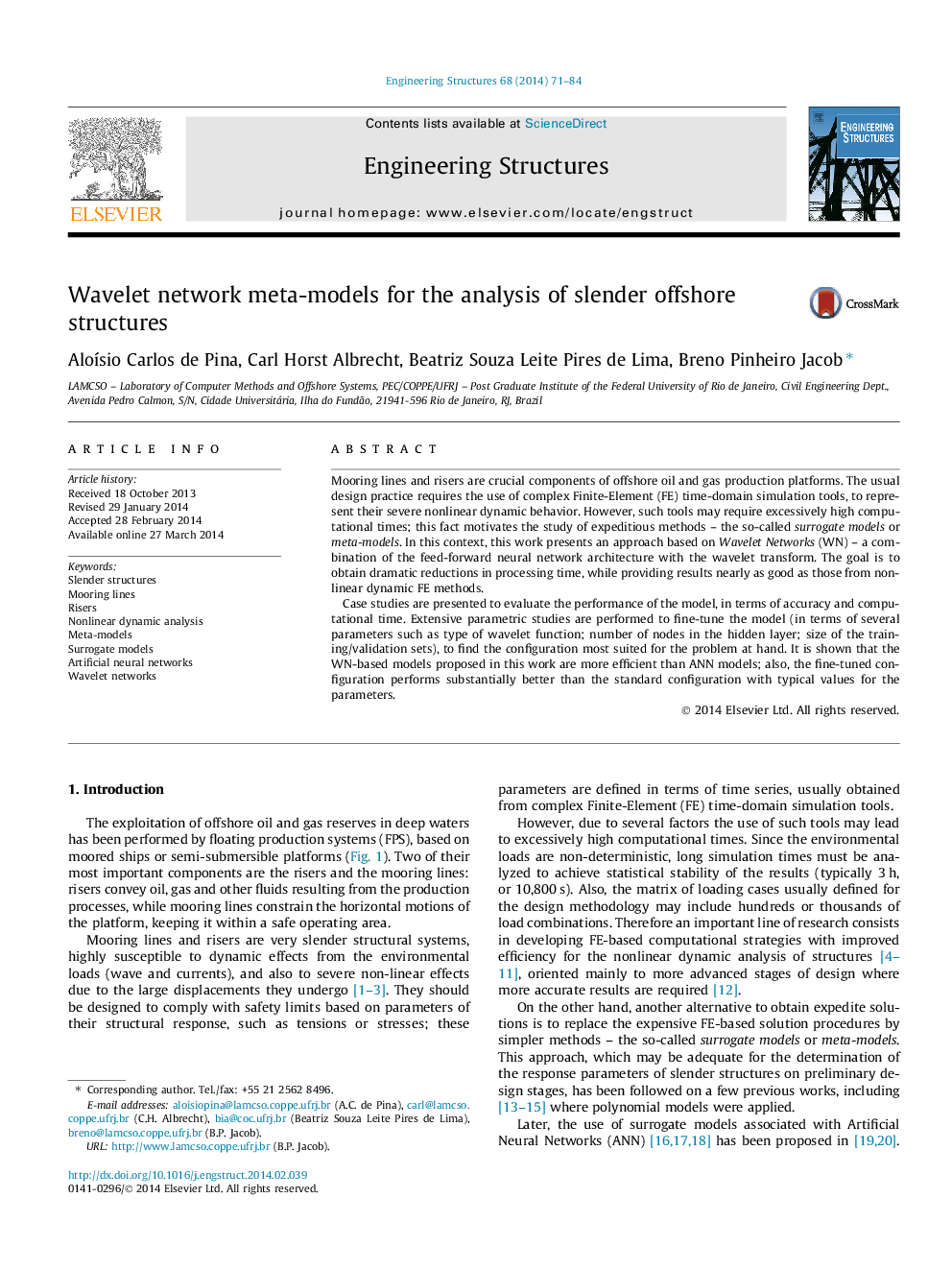| Article ID | Journal | Published Year | Pages | File Type |
|---|---|---|---|---|
| 266779 | Engineering Structures | 2014 | 14 Pages |
•This work presents more efficient meta-models based on Wavelet Networks (WN).•The models are employed for nonlinear dynamic analysis of mooring lines and risers.•The goal is to obtain dramatic reductions in CPU time compared to FE analyses.•Optimal WN configuration has been obtained from extensive parametric studies.•Results indicate that the proposed WN models perform better than ANN models.
Mooring lines and risers are crucial components of offshore oil and gas production platforms. The usual design practice requires the use of complex Finite-Element (FE) time-domain simulation tools, to represent their severe nonlinear dynamic behavior. However, such tools may require excessively high computational times; this fact motivates the study of expeditious methods – the so-called surrogate models or meta-models. In this context, this work presents an approach based on Wavelet Networks (WN) – a combination of the feed-forward neural network architecture with the wavelet transform. The goal is to obtain dramatic reductions in processing time, while providing results nearly as good as those from nonlinear dynamic FE methods.Case studies are presented to evaluate the performance of the model, in terms of accuracy and computational time. Extensive parametric studies are performed to fine-tune the model (in terms of several parameters such as type of wavelet function; number of nodes in the hidden layer; size of the training/validation sets), to find the configuration most suited for the problem at hand. It is shown that the WN-based models proposed in this work are more efficient than ANN models; also, the fine-tuned configuration performs substantially better than the standard configuration with typical values for the parameters.
